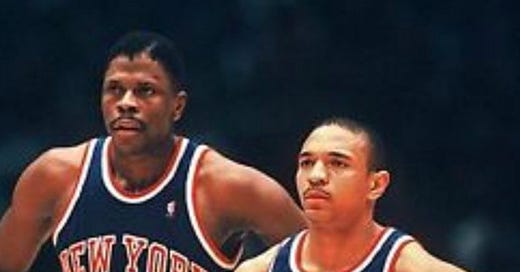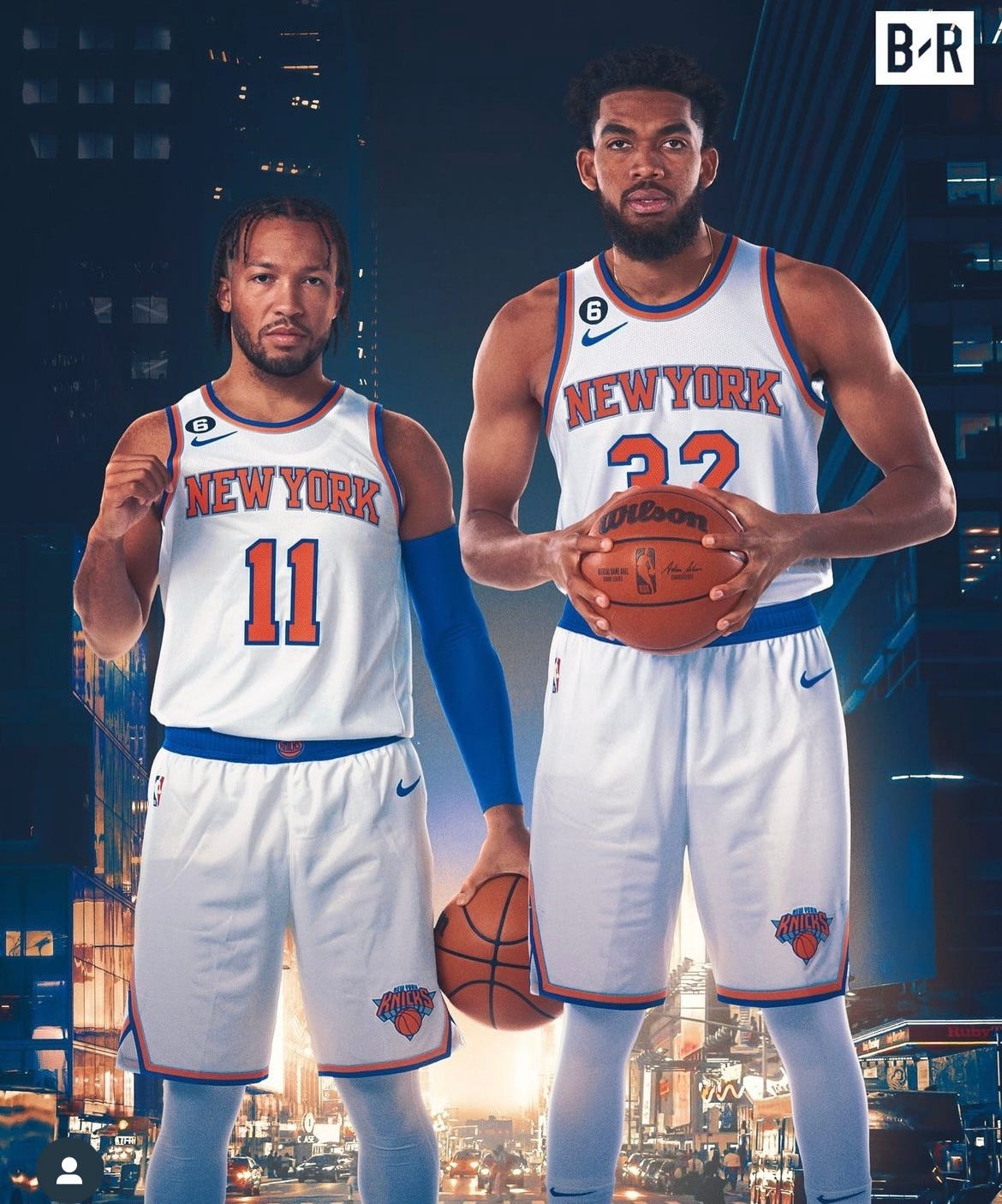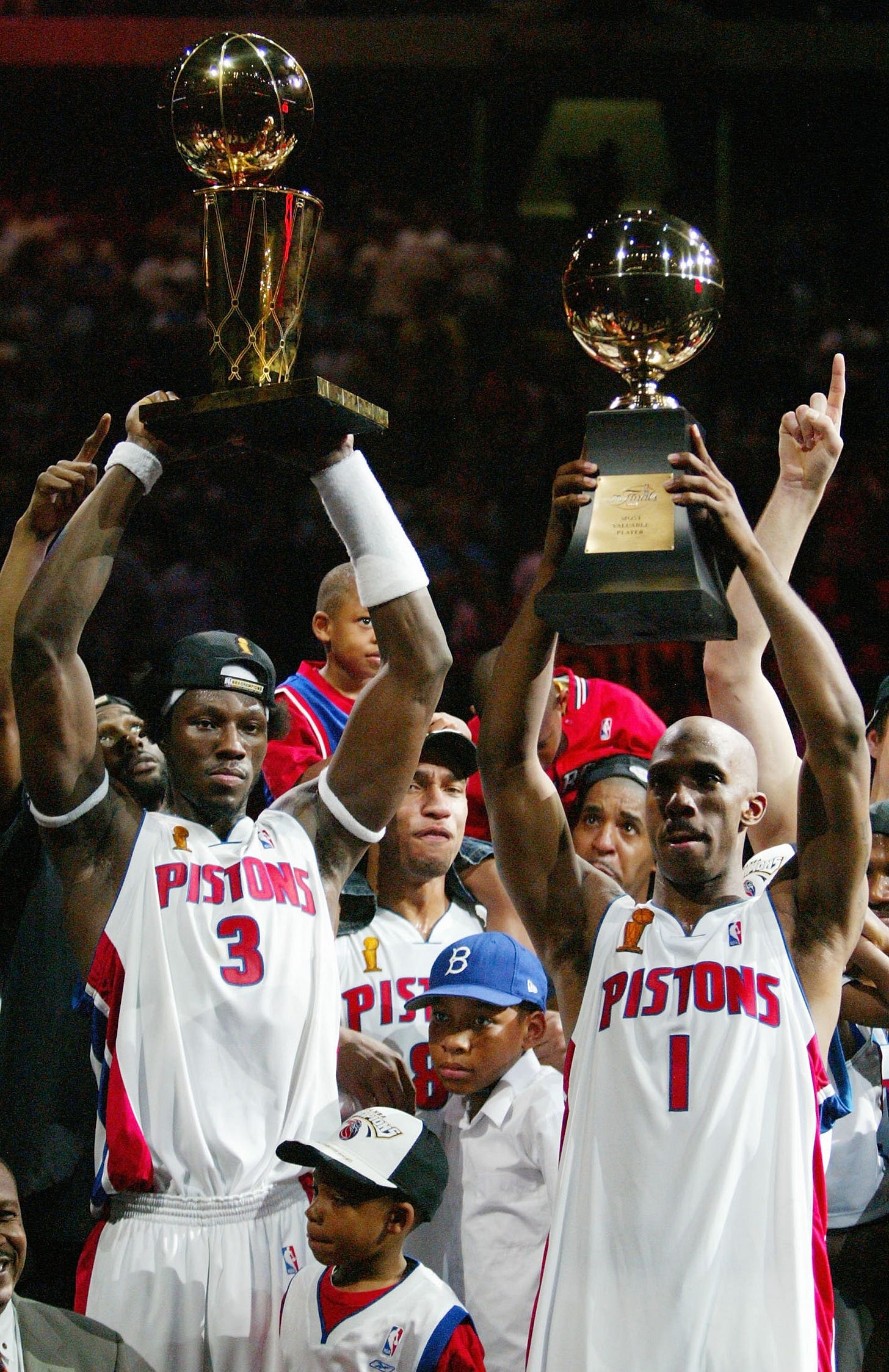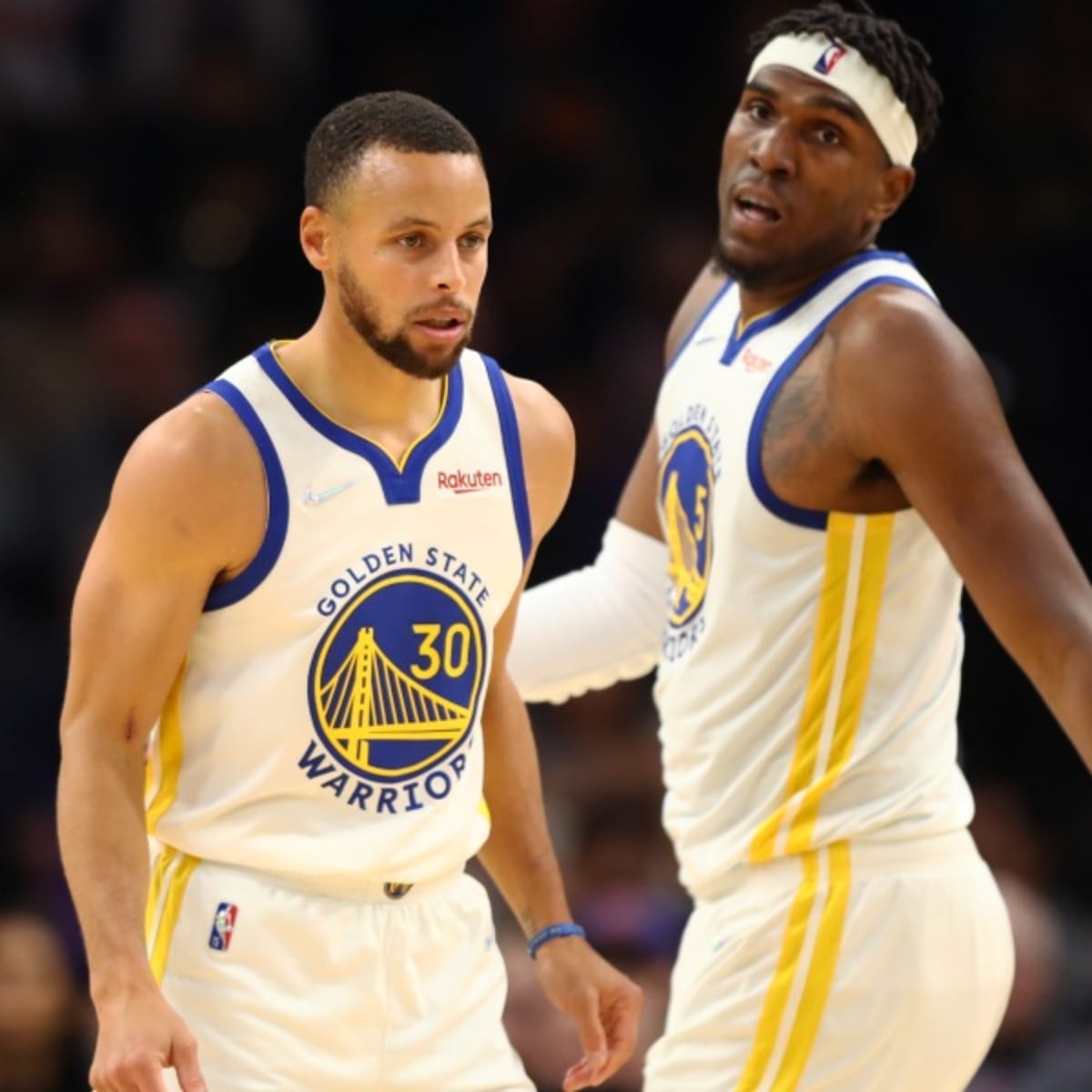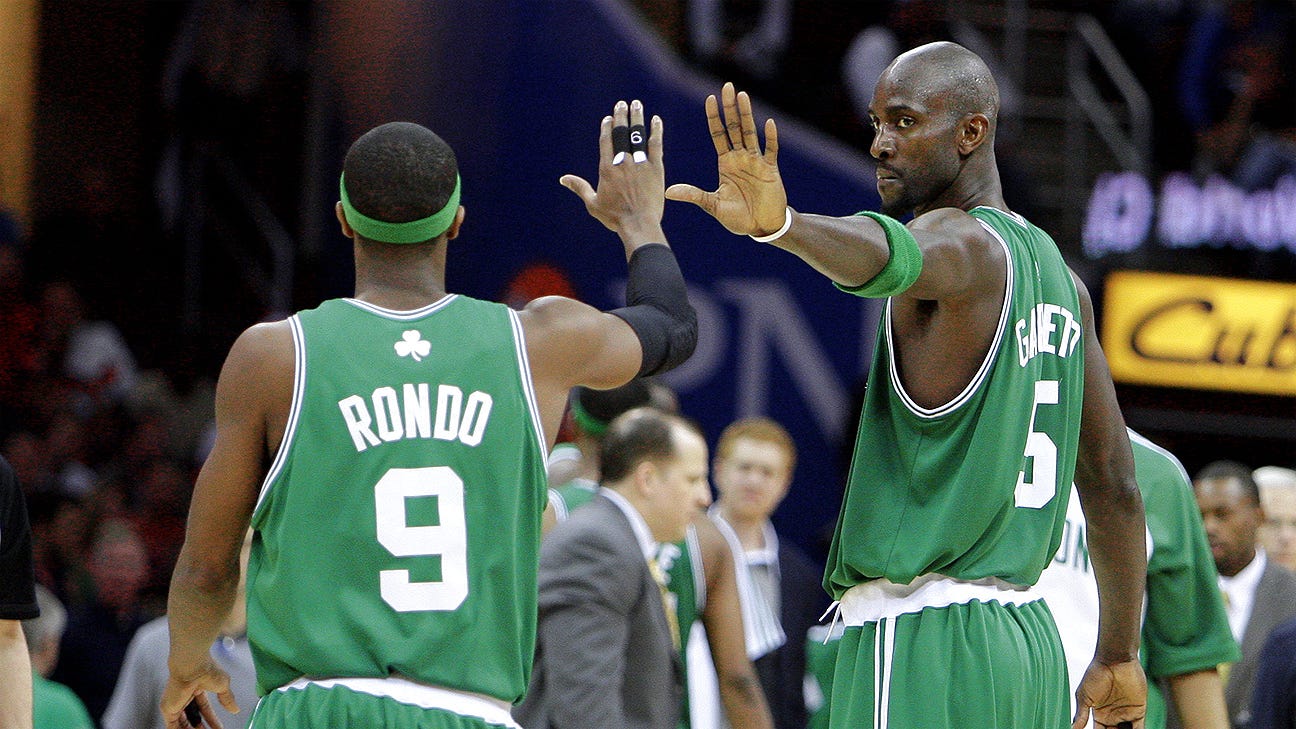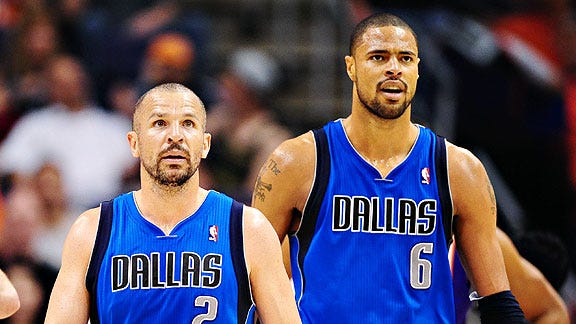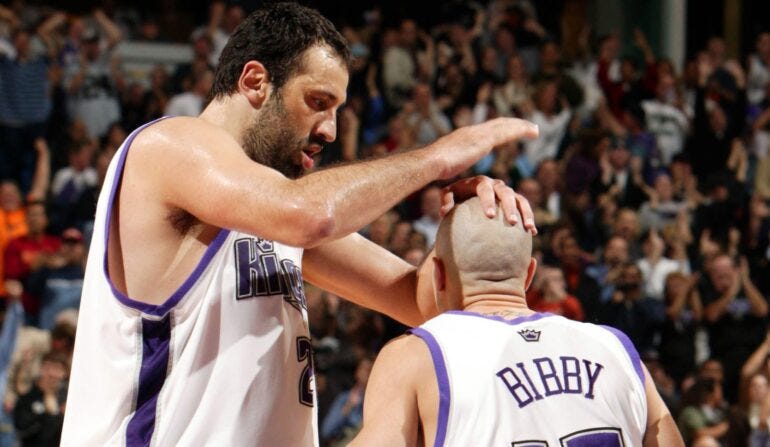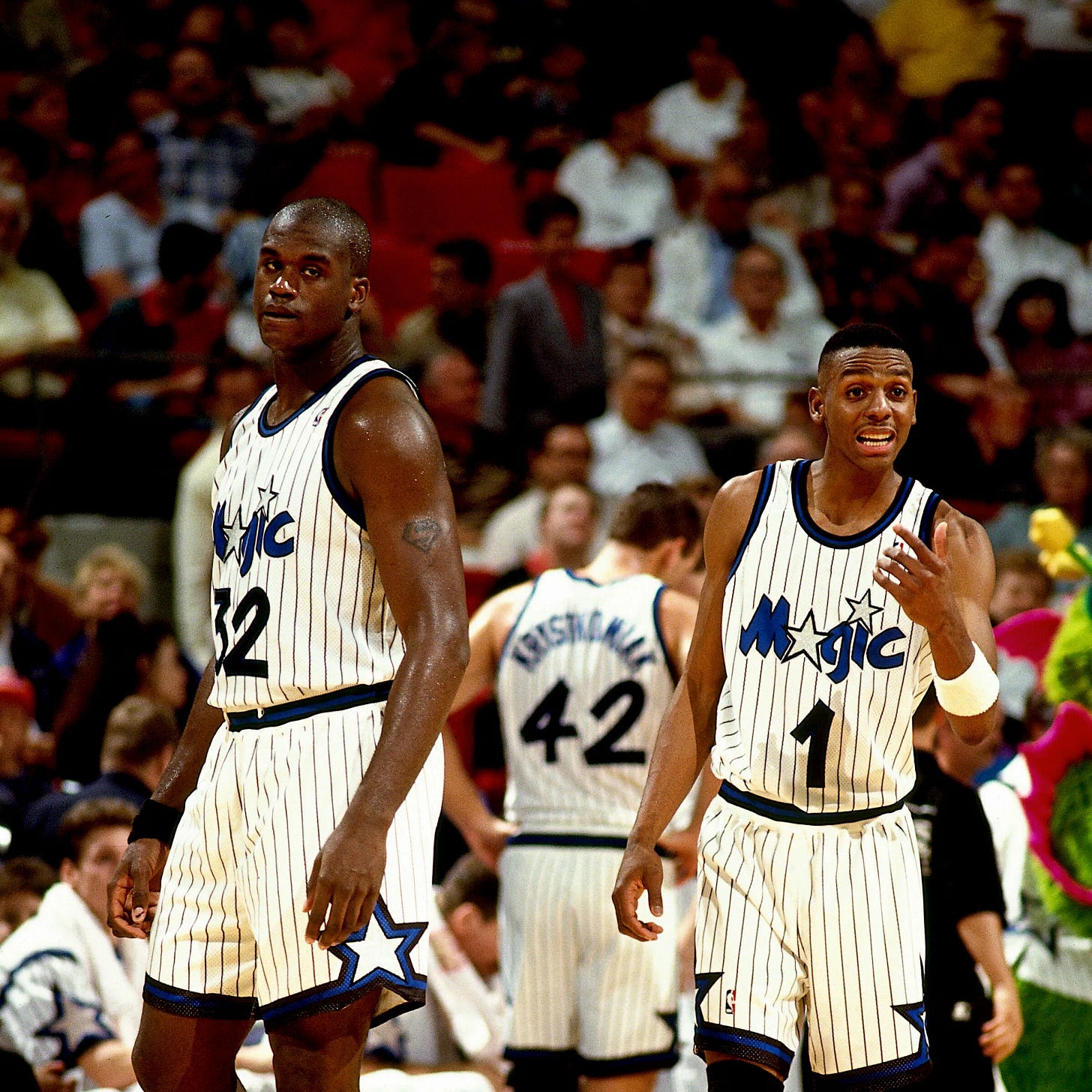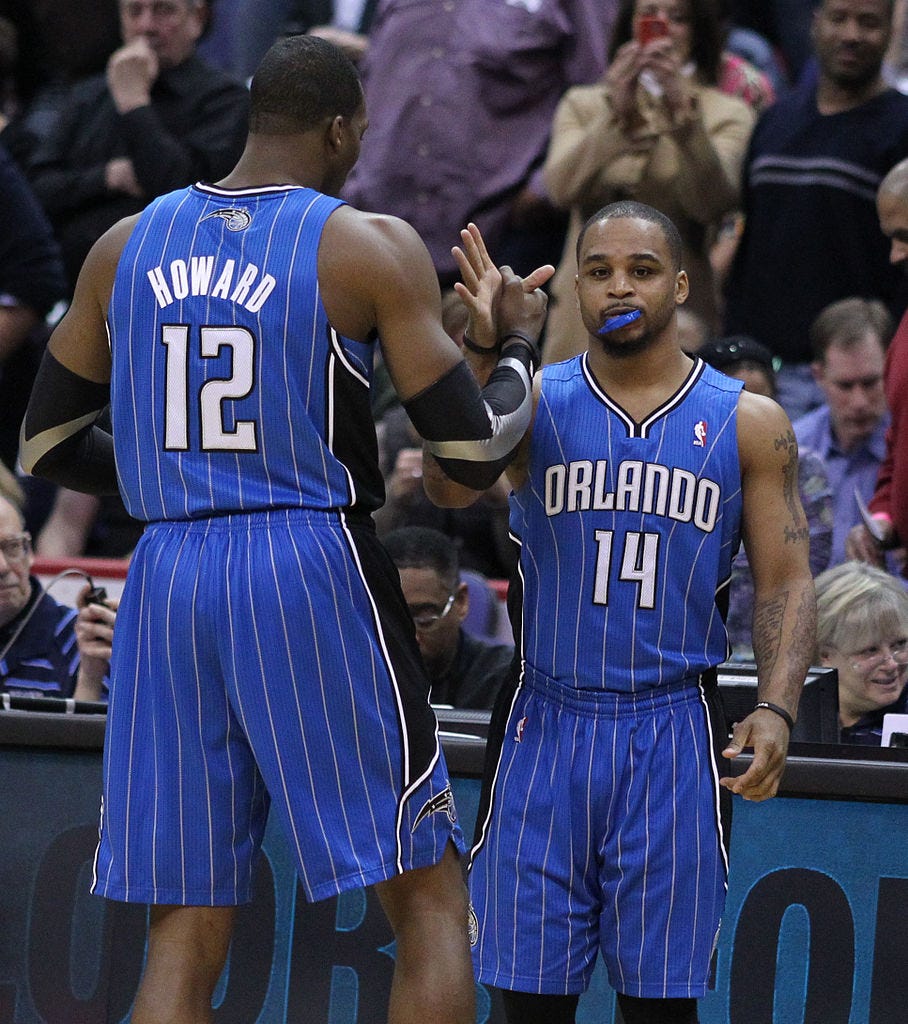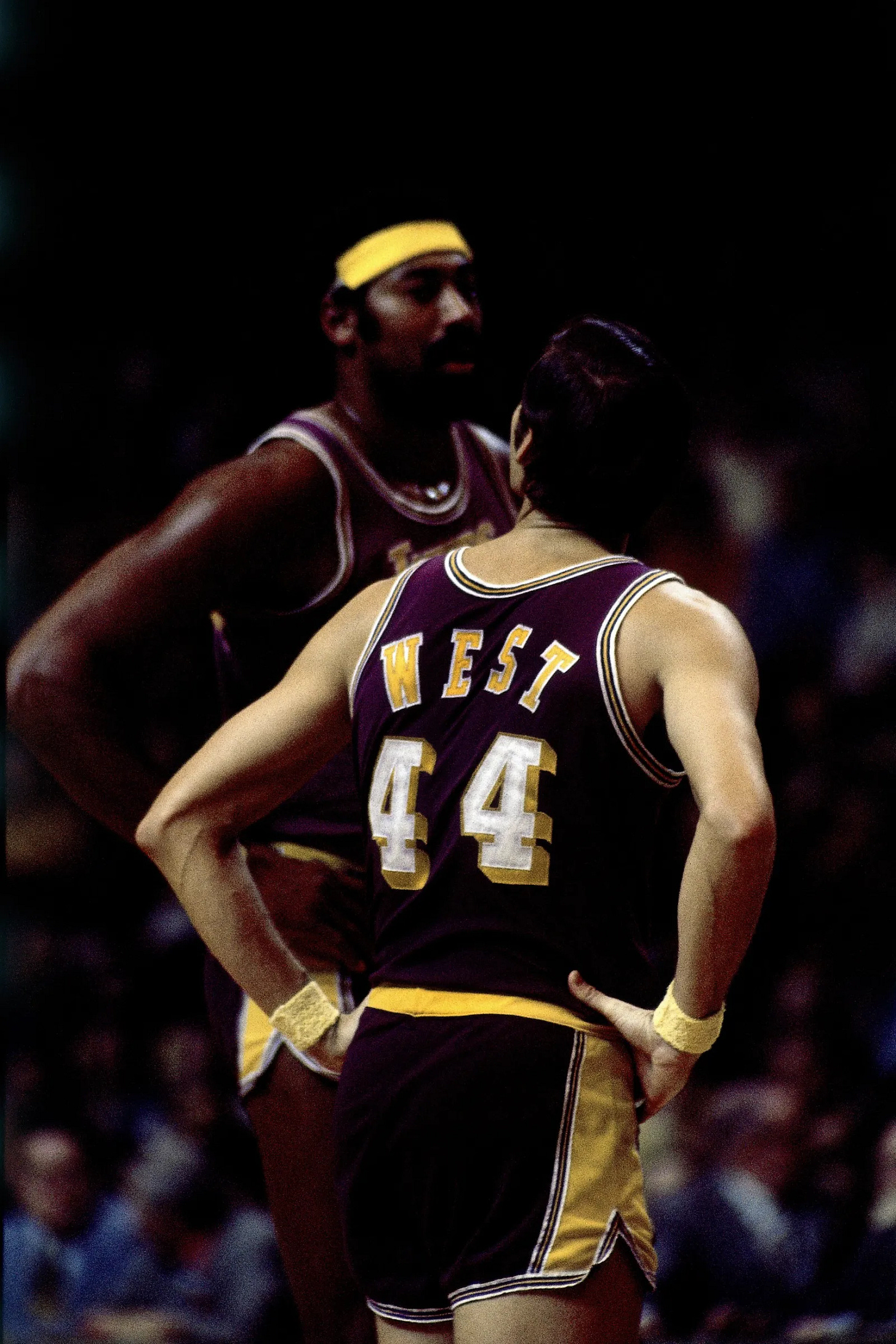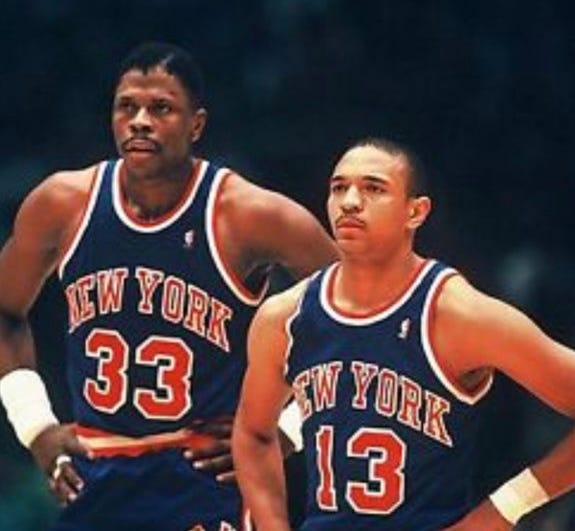Legendary Point Guard/Center Combos In NBA History
Karl Anthony Towns and Jalen Brunson can be a great Duo for years to come. Can they match the production of some of the legendary Point Guard/Center combinations in NBA history? Let’s talk about it
Now that the Knicks have Karl Anthony Towns in the building let’s look at his career stats
Shoutouts to Brock Aller, the Knicks’ Vice President of Strategic Planning, he plays a crucial role in the team’s front office, specializing in complex deals that require deep understanding of salary cap management and strategic maneuvering. We might have to build this man a statue, the knicks I grew up with gave Jerome James all the money and told him go hoop. Aller expertise was pivotal in the Knicks’ acquisition of Karl-Anthony Towns, a trade that involved navigating the intricate rules of the NBA’s salary cap, particularly the first and second apron thresholds. Here’s an article from ESPN where I cited the source Karl Anthony Towns to the Knicks
The first and second aprons are spending limits set by the NBA’s collective bargaining agreement. Teams that exceed these thresholds face increasing penalties and restrictions, such as losing access to certain exceptions and being unable to sign players to mid-level deals. The second apron is especially strict and prevents teams from making additional roster moves once it is surpassed. In this case, the Knicks were focused on staying below the second apron to retain flexibility throughout the season.
Aller’s planning started with structuring contracts like those of Jalen Brunson and Mitchell Robinson to descend over time, which freed up critical cap space. He also orchestrated a series of trades on draft night that allowed the Knicks to save $1.3 million in cap space through lower rookie contracts, like that of Pacome Dadiet. One of the more intricate moves involved not extending a qualifying offer to Precious Achiuwa, which saved the Knicks $300,000 in cap space when they later re-signed him at a lower rate.
Additionally, Aller engineered a rare triple sign-and-trade involving players like Charlie Brown Jr., DaQuan Jeffries, and Duane Washington Jr., which helped meet salary cap requirements for the deal. The Knicks also maximized the $7.2 million allowed to send in cash to facilitate the trade, covering the contracts of those players with another team making a profit.
All these maneuvers were critical in allowing the Knicks to trade for Towns without breaking the second apron, showcasing Aller’s ability to manage complex financial constraints and execute a highly strategic deal. His cap management skills and detailed planning were essential in securing one of the team’s most important acquisitions.
Now as a Knick fan I know what Jalen Brunson brings the man just finished averaging His 28.7 PPG, 6.7 APG and 2.7 3PG last season becoming an Allstar for the first time in his career and All NBA. Can Brunson and Kat put it together and possibly in some championships? Let’s deep dive into NBA history for some great Point Guard / Center combinations.
Throughout NBA history, some of the most successful and exciting teams have been built around the partnership of a great point guard and a dominant center. These duos have used their unique blend of playmaking and post dominance to lead their teams to championships or deep playoff runs. Below are some of the most legendary point guard/center combinations in NBA history.
Magic Johnson & Kareem Abdul-Jabbar Los Angeles Lakers
Magic Johnson and Kareem Abdul-Jabbar are perhaps the most iconic point guard/center duo ever. Together, they led the Lakers to five NBA championships (1980, 1982, 1985, 1987, 1988) during the “Showtime” era. Magic’s court vision and fast-break leadership, combined with Kareem’s unstoppable skyhook, made the Lakers one of the most dominant teams in NBA history. Magic averaged 19.5 points, 11.2 assists, and 7.3 rebounds during their time together, while Kareem contributed 22.1 points, 9.8 rebounds, and 2.5 blocks per game, earning two MVPs during their partnership.
Walt Frazier & Willis Reed New York Knicks
Walt Frazier and Willis Reed powered the Knicks to two championships in 1970 and 1973. Reed, the team’s tough leader, and Frazier, known for his smooth, all-around game, formed a perfect balance of strength and finesse. Frazier averaged 18.7 points, 6.3 assists, and 6.0 rebounds during their time together, while Reed averaged 19.3 points and 13.1 rebounds per game. Reed’s legendary Game 7 return in the 1970 Finals, alongside Frazier’s 36-point, 19-assist performance, remains one of the most iconic moments in NBA history.
Chauncey Billups & Ben Wallace. Detroit Pistons
The 2004 Detroit Pistons were built on defense, with Chauncey Billups and Ben Wallace at the core. Billups’ steady leadership and clutch shooting paired with Wallace’s shot blocking and defensive presence made the Pistons one of the toughest teams to beat, leading to their 2004 NBA championship. Billups averaged 16.5 points, 6.2 assists, and won the 2004 Finals MVP. Wallace, meanwhile, was a defensive powerhouse, averaging 6.6 points, 12.2 rebounds, and earning four Defensive Player of the Year awards during their run.
Isiah Thomas & Bill Laimbeer Detroit Pistons
Isiah Thomas and Bill Laimbeer led the “Bad Boys” Pistons to back-to-back championships in 1989 and 1990. Thomas, a fierce competitor and elite point guard, paired perfectly with Laimbeer, a tough and physical center who could stretch the floor with his shooting. Thomas averaged 19.3 points and 9.3 assists during their championship seasons, while Laimbeer contributed 12.6 points and 10.1 rebounds per game, becoming known for his gritty style of play.
Bob Cousy & Bill Russell Boston Celtics
Bob Cousy and Bill Russell helped the Boston Celtics win six championships together (1957, 1959-1963). Cousy’s innovative playmaking, combined with Russell’s unmatched defense and rebounding, made them one of the earliest and most dominant point guard/center duos. Cousy averaged 17.6 points and 7.5 assists during their time together, while Russell was a force on the defensive end, averaging 17.1 points and 23.6 rebounds per game, winning five MVP awards during his career.
Stephen Curry & Kevon Looney Golden State Warriors
While Kevon Looney isn’t as high-profile as other centers, his partnership with Stephen Curry has been crucial to the Warriors’ three championships (2017, 2018, 2022). Curry’s revolutionary shooting and playmaking created spacing, while Looney’s defense and rebounding helped the Warriors dominate. During their partnership, Curry has continued to average 26.3 points and 6.8 assists per game, while Looney’s key contributions on the boards helped the Warriors solidify their place as a dynasty.
Rajon Rondo & Kevin Garnett Boston Celtics
Kevin Garnett, often playing center during key moments, and Rajon Rondo led the Celtics to the 2008 NBA championship. Garnett’s defense and intensity, paired with Rondo’s playmaking, made for a formidable combination. Garnett averaged 18.8 points, 9.2 rebounds, and was named Defensive Player of the Year in 2008. Rondo’s emergence as a floor general saw him average 10.6 assists per game that season, helping orchestrate the Celtics’ championship-winning campaign. I understand Kendrick Perkins was the starting center but to close games Garnett was at the 5.
Dennis Johnson & Bill Walton Boston Celtics
Dennis Johnson and Bill Walton were key contributors to the Celtics’ 1986 championship team. Walton, coming off the bench, provided elite passing and defense as the backup center, while Johnson’s leadership at point guard gave the Celtics stability. Walton averaged 7.6 points and 6.8 rebounds in his Sixth Man of the Year campaign, while Johnson chipped in with 15.6 points and 5.8 assists per game, making this duo one of the most complete on both ends of the floor.
Jason Kidd & Tyson Chandler Dallas Mavericks
In 2011, Jason Kidd’s veteran playmaking combined with Tyson Chandler’s defensive prowess to help the Mavericks win their first NBA championship. Kidd, at 38, still averaged 8.2 assists and provided veteran leadership, while Chandler’s shot-blocking and rebounding were crucial in their upset of the Miami Heat. Chandler, who averaged 10.1 points and 9.4 rebounds, anchored the defense and was named the team’s most valuable defensive player.
Mike Bibby & Vlade Divac Sacramento Kings
Mike Bibby and Vlade Divac were central to the Kings’ success in the early 2000s. Bibby’s clutch shooting and playmaking, paired with Divac’s elite passing as a center, helped create one of the most fluid offenses in NBA history. Bibby averaged 17.2 points and 5.0 assists during their time together, while Divac averaged 12.5 points and 8.3 rebounds. Though they never won a title, their near-upset of the Lakers in the 2002 Western Conference Finals made them one of the most beloved duos in franchise history.
Shaquille O’Neal & Penny Hardaway Orlando Magic
Before Shaq’s Lakers days, he and Penny Hardaway formed a dynamic duo with the Orlando Magic in the mid-90s. Penny’s size, playmaking, and scoring ability paired with Shaq’s sheer dominance in the paint led the Magic to the NBA Finals in 1995. Shaq averaged 26.3 points and 12.8 rebounds, while Penny averaged 19.5 points and 7.0 assists during their time together. Although they didn’t win a championship, they were one of the most exciting young duos of the decade.
Jameer Nelson & Dwight Howard (Orlando Magic)
Jameer Nelson and Dwight Howard led the Orlando Magic to the 2009 NBA Finals. Nelson, a steady point guard, paired with Howard, the league’s most dominant defensive center at the time. Howard averaged 18.2 points, 13.0 rebounds, and 2.5 blocks per game, while Nelson provided clutch shooting and leadership with 13.5 points and 5.4 assists per game. They didn’t win the championship, but their run to the Finals was a highlight of the Magic’s modern era.
Oscar Robertson & Kareem Abdul-Jabbar Milwaukee Bucks
Oscar Robertson and Kareem Abdul-Jabbar (then Lew Alcindor) led the Milwaukee Bucks to their first NBA championship in 1971. Kareem’s dominance in the post and Robertson’s all-around brilliance made them one of the most formidable duos in history. Kareem averaged 28.4 points and 14.7 rebounds per game during their partnership, while Robertson contributed 16.3 points and 7.5 assists. Their 1971 championship run remains the pinnacle of Bucks history.
Jerry West & Wilt Chamberlain Los Angeles Laker
Jerry West and Wilt Chamberlain finally led the Los Angeles Lakers to a championship in 1972, breaking years of frustration after losing multiple Finals. West’s scoring and playmaking perfectly complemented Wilt’s rebounding and shot-blocking as they helped lead the Lakers to a record-setting 33-game winning streak that season. West averaged 25.3 points and 8.0 assists, while Wilt averaged 14.8 points and 19.2 rebounds per game. Wilt was named Finals MVP as they captured the 1972 title.
Mark Jackson & Patrick Ewing New York Knicks
Mark Jackson and Patrick Ewing played together on the New York Knicks during the 1987-88 season. Jackson, in his rookie season, quickly emerged as one of the league’s top point guards, averaging 13.6 points and 10.6 assists per game. Ewing, already a dominant force in the league, averaged 20.2 points, 9.7 rebounds, and 3.4 blocks per game. Though they didn’t win a title, Jackson went on to win Rookie of the Year, and their partnership helped lay the foundation for future Knicks success in the 90s.
These legendary point guard/center combinations have left an indelible mark on the game of basketball. Whether through winning championships or electrifying fans with their play, these duos have helped define their eras and left lasting legacies in NBA history.


